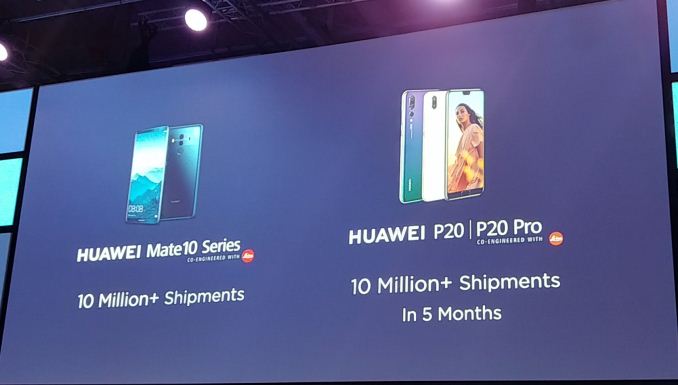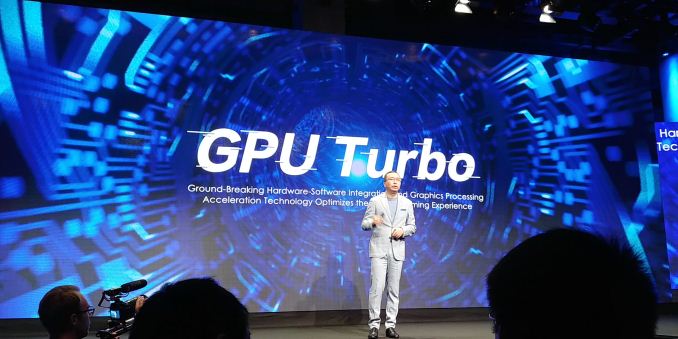Huawei’s GPU Turbo: Valid Technology with Overzealous Marketing
by Ian Cutress & Andrei Frumusanu on September 4, 2018 9:00 AM EST- Posted in
- Smartphones
- Huawei
- Mobile
- Benchmarks
- honor
- Neural Networks
- Kirin 970
- AI
Conclusion: Still A Plus, But
Back in 2015, AnandTech was in the extraordinary position to be the first western publication to actually meet with HiSilicon, reporting on the Kirin 950 from their Beijing media briefing. One of the things I still remember from back then was a definitive sense of humility and a very good sense of self-awareness in regards to the company’s products. Things have changed a lot in the past three years, and Huawei as a company has grown considerably since then.
Huawei and Honor combined now sell 153 million smartphones a year, and Huawei is now the second largest smartphone manufacturer worldwide, recently overtaking Apple. Honor claims it is fifth worldwide. Huawei has also stated that it will raise its future R&D budget from 15% of total revenue (US$13.23 billion) up to 20-30% during the race to 5G. Both are major players in this space, to the point where Huawei’s in-house silicon design team, HiSilicon, creates its own SoCs to help differentiate its products from those based on Qualcomm and MediaTek SoCs.
The explosive growth from Huawei not only goes into R&D, but also marketing. As the company has expanded, we have seen smartphone launch after smartphone launch held in glamorous places in Europe, along with perhaps the biggest sampling program for smartphone launches ever: all members of the invited press to the show, typically around 500-2000, are sampled. This is compared to Samsung and Apple who offer limited units to select press only, or LG who does both unit distribution at briefings (30+) and sampling to press. With the desire to gain brand awareness, and recognition, Huawei has gone into overdrive with its methodology, which has been a metaphorical double-edged sword – while delivering innovative solutions on the technical side, the brand message in some ways strayed from its more humble roots.
Developing technologies like GPU Turbo is going to be key for Huawei. Huawei has obvious gaming performance, image quality, and power efficiency deficits to Qualcomm’s Snapdragon. Playing with the silicon die for price/performance/area is a balancing act and will offer some gains, but typically at the expense of other specifications. This is why GPU Turbo is important: development of GPU Turbo is a "free" efficiency gain from a hardware perspective. Rather than involving new silicon, it's developed through a dedicated software effort, and as a result of the gains the feature is being rolled out across the range of smartphones that both Huawei and Honor offer at retail. GPU Turbo still has ways to go, such as expanding the number of games supported, and potential improvements on the horizon, such as having a single algorithm to cover all use-cases, but the future looks good for it.
Marketing these technologies, like GPU Turbo, is also important. Comparing the headline 60% better performance and 30% better efficiency data on the Kirin 970, with GPU Turbo, to the Kirin 960, without GPU Turbo, almost a year after the launch of the Kirin 970 and not declaring this in every presentation is a deliberate attempt at obfuscation. This is borne through Huawei’s own data in the same presentations, showing the Kirin 980 achieving minor performance and efficiency gains when the feature is enabled. The gains are still worth having, but are vastly lower than the numbers Huawei likes to promote every time GPU Turbo is mentioned.
This, along with the recent discovery of benchmark detection and acceleration to get higher scores, suggests that someone at Huawei is trying to pull the wool over the users’ eyes. It is not a good look, and despite Huawei’s explosive growth, key figures at the company are going to have to look inwards at how they want the company to be perceived on the main stage. The bigger the company is, the more it ends up under the microscope, so maintaining a level of honesty is important, otherwise the trust with the consumer is lost quick and fast. Trying to hide the real world numbers, just to get high on a performance table, just looks bad. It is bad.
The Final Word on GPU Turbo
As mentioned several times in the review, now that GPU Turbo has been explained in greater detail, the technology is genuine as far as we can tell, and is likely going to be a catalyst for a new way for vendors to differentiate themselves across the mobile spectrum, as the competition will be looking into similar solutions.
For everything we just stated about Huawei’s presentations, we hope that the company is giving plenty of kudos and praise to the teams that had the idea, and developed the technology. In an ever competitive landscape where SoC vendors need to differentiate and try to one-up each other, technologies like GPU Turbo are emerging as innovative advantages, improving the overall user experience.
Time, hardware, and software permitting, we will be aiming to go and get fully accurate benchmark data with and without GPU Turbo on the Kirin 980 after its launch. Stay tuned.
Benchmarking and Core Analysis by Andrei Frumusanu
Extra Analysis and Conclusion by Ian Cutress













64 Comments
View All Comments
GreenReaper - Wednesday, September 5, 2018 - link
> all members of the invited press to the show, typically around 500-2000, are sampledCurious.... so, what you're saying is that a Chinese company is going all-out to provide devices designed to monitor personal data to every possible tech journalist - and they can now coincidentally no longer become root to investigate them...?
Smell This - Wednesday, September 5, 2018 - link
Creative Engineering(i.e., imaginative and innovative marketing ___ to cheat)
;-)
yhselp - Wednesday, September 5, 2018 - link
If GPU Turbo is actually capable of smoothing out frame-time, it might be a huge win for consumers. It doesn't matter how pretty a game looks, or how fast it renders, if it has an inconsistent frame-time, making the controls sluggish. Any person who cares about gaming on a smartphone, especially something like PUBG and MOBAs, should find responsive controls preferable over higher image quality and sheer framerate. If Huawei manages to deliver smoother gameplay on its devices, it would be a huge win, despite the lower image quality.Hopefully they make tools to test frame-time easily available. We can't expect Digital Foundry to manually test every supported Kirin device and game.
s.yu - Friday, September 7, 2018 - link
It's a huge loss for consumers in the long term if they get away time and again with their deception.Achtung_BG - Wednesday, September 5, 2018 - link
I love anandtech, good job!Flunk - Wednesday, September 5, 2018 - link
"Up To" always makes me suspicious, always. I could claim that adding my sticker to your phone could offer up to a 200% frame rate increase and still not technically be incorrect.s.yu - Friday, September 7, 2018 - link
I agree, how about citing the 1st percentage of performance numbers, read a spike for a second and stick it on the ad.mazz7 - Thursday, September 6, 2018 - link
Huawei is surely moving fast in this mobile arena :) look forward into the new device that use Kirin 980abufrejoval - Thursday, September 6, 2018 - link
Can't say that I care that much about mobile gaming any more, did some on the tablets but since those only receive left-over hardware these days, I'll just stick to the desktop for gaming.I could be attracted to buy a Kirin 980 device, simply to play with the NN accellerator, but with a locked down bootloader, they locked themselves out of my MVP.
Hopefully a HiKey980 model will be available shortly, that doesn't have this crazy limitation, I was getting very close to buying the HiKey970, when the Kirin 980 appeared.
I still fail to see the rationale behind the lock-down decision and I wish you could have drilled a bit into the engineers in Berlin to find out why they changed their policy. If it's all about hiding the architectural weaknesses you so regularly expose, it doesn't really seem to be working.
It's a little irritating that HMD/Nokia is following the same path and it's easy to see why phone for the Chinese domestic market would be locked down by order of the government to ensure any government trojan is properly protected from removal.
But EU/free world imports without unlockable bootloader should really be banned.
If it's all about compensating for the lack of a secure element or HSM on the phone e.g. for payment, it's just a very bad design choice. I understand why Google didn't want the Telcos charge rent on SIM cards, but an approach like the L4 kernel on a dedicated CPU chosen by Apple seems a better alternative.
s.yu - Friday, September 7, 2018 - link
So it's settled then, by Anandtech as always. Great work!